|
2461
- Inclusion document re: Eddie and Keela search/results
2007.08.23 |
|
WITH THANKS TO INES |
|
09 Processos
Vol IX Page 2461 |
|
09_VOLUME_IXa_Page_2461 |
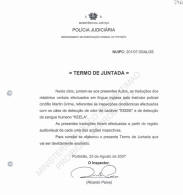 |
Policia Judiciaria
NUIPC 201/07. GALGS
Terms of Joining
On this date I join to the case files the translations of the
verbal reports made in English by the police sniffer dog trainer
Martin Grime, referring to the sniffer dog inspections carried
out with the cadaver odour detection dog Eddie and the human
blood detection dog, Keela.
These translations were made working from the audio-visual
recordings of each of the inspections.
These terms of joining were elaborated and will be signed.
Portimao 23 August 2007
Inspector Paiva
|
|
2462 to 2465-
Analysis of the cadaver & blood dog searches in 5A and in the
vehicles (in Portuguese)
|
|
09-Processos Vol IX Pages 2462 to 2465 |
|
09_VOLUME_IXa_Page_2462 |
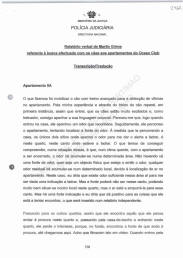 |
|
09_VOLUME_IXa_Page_2463 |
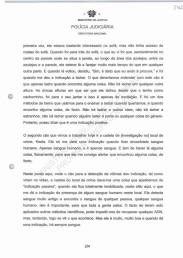 |
|
09_VOLUME_IXa_Page_2464 |
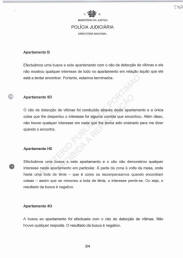 |
|
09_VOLUME_IXa_Page_2465 |
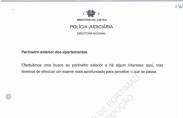 |
Verbal Report by Martin Grime Relating to the Searches Carried
out with the Dogs in the Ocean Club Apartments
Transcription/Translation
Apartment 5 A
Ok what was done was we deployed the victim recovery dog into
the apartment and by experience and the training of the dog what
I first noticed is that as soon as I came in that the dog was
very excited and as a handler I can pick up his body language
etc and it would appear to me that as soon as he has come into
the house he's picked up a scent that he recognises and he has
then gone through the apartment trying to source where that
scent source has come from and as he has worked through the
house the only two places where he picks up enough scent to give
me the bark alert are in this bedroom, in this corner where he
was barking.
What we have to be able to understand in a situation such as
this is in a hot climate with the apartment being closed down,
the scent will build up in a particular area. If there isn't a
scent source in here, i.e. a physical article where the scent is
emitting from, any scent residue will collect in a particular
place due to the air movement of the flat, the apartment and
what I would say in this case is that there is enough scent in
that area there for him to give me a bark indication but the
source may not be in that cupboard, the source may well be in
this room somewhere else but the air is actually pushing into
that corner. But strong indication and I would say its positive
for things that he is trained to find, which will be part of a
separate debrief.
Moving onto the other rooms once he's found what he thinks he's
looking for in this room, and we go into the bathroom and come
into this bedroom he loses his interest because he's actually
found the source that he was looking for, until we come over
here and I think you've got it on video that when he first came
in he was quite interested in the sofa but he didn't have access
to the back of the sofa and when he's gone behind the sofa what
I saw was that approximately in the centre of the wall where the
window is, just along the tile area between the tiles and the
wall, he's been scenting there a lot stronger than he has
anywhere else and the when he's gone out there the second time
he has decided yes that's what I'm looking for and that's when
he has given me the bark indication.
What we should understand with this dog is that he only barks
when he finds something, he won't bark at any other times. He
won't bark at other dogs, he won't bark at strangers, he won't
bark when somebody knocks on the door or anything like that. The
only times I've ever known him bark since I've got him as a
small puppy a) for his dinner and that's just excitement and
that's one of the training methods we use to teach to bark when
we want him to and when he actually finds something, he won't
bark at other dogs, he won't bark at strangers, he won't bark
when somebody knocks on the door or something like that, so
again I would say that's a positive indication.
The second dog that we've seen work today is the crime scene dog
Keela. She will only indicate to me when she has found human
blood, only human blood and it is only blood and there must be
something there physically for her to be able to alert to me
that's she has actually found something. At this point over here
where the victim recovery dog has indicated, as you saw on the
video, the crime scene dog had actually given me what we call a
passive indication where she freezes in this spot here which
would indicate to me that there is some human blood there. She
will find blood that's historically very old and she will find
anybody's blood, any human blood, which is important to make
sure that everybody knows.
The fact that there is other scientific methods being used may
stop you recovering any DNA but if you try we'll see what
happens. But she is very, very good and when she indicates there
is always blood there.
Apartment B
We've searched this apartment with the victim recovery dog and
he has shown no interest in the flat for what he he trained to
find at all so we finished.
Apartment 5 D
We've put the victim recovery dog through this apartment, the
only interest has been in some food that he has found, other
than that there is no interest in anything that he has been
taught to tell me that he has found.
Apartment H5
We searched this apartment and the dog hasn't shown any interest
in this particular apartment, apart from around the table, where
there was a tennis ball which is how we reward the dog for
finding things, as soon as we removed the tennis ball the
interest was gone. And so it was a negative search.
Apartment 4 G
We searched the apartment using the victim recovery dog. No
response. Negative search.
Outside perimeter of apartments
We've searched the outer perimeter, there is some interest here
but it will take some further examination to see what's going
on. |
|
2466
- Analysis of the
cadaver & blood dog searches in 5A and in the vehicles (in
Portuguese) |
|
09 Processos Vol IX Page 2466 |
|
09_VOLUME_IXa_Page_2466 |
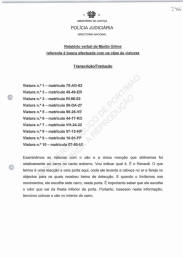 |
Verbal Report of Martin Grime Referring to the Search Made of
Vehicles Using the Dogs
Transcription/Translation
Vehicle No 1 - number plate 75-AG-62
Vehicle No2 - number plate 45-49-ER
Vehicle No3 - number plate RI-96-03
Vehicle No4 - number plate 59-DA-27
Vehicle No5 - number plate 96-26-VE
Vehicle No6 - number plate 44-77-KD
Vehicle No7 - number plate VH-24-22
Vehicle No8 - number plate 57-12-HP
Vehicle No9 - number plate 10-91-FP
Vehicle No10 - number plate 07-50-UI
We examined the cars with the dog and the only reaction we got
was in relation to the car in the extreme corner. I will
indicate that it was the Renault. What we have is a reaction to
this door here, where (the dog) lifts its head in the air and
sniffs for the objects which it has been trained to detect. And
when we limit our movements, the dog chooses this car, this
door. It is important to know that the dog chooses the odour
that comes from the lower part of the door. Based on this
information, I will try to place the dog inside the car. |
|
2467
- Analysis of the cadaver & blood dog searches in 5A and in the
vehicles (in Portuguese |
|
09 Processos Vol IX Page 2467 |
|
09_VOLUME_IXa_Page_2467 |
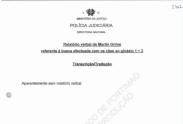 |
verbal Report by Martin
Grime Referring to the Searches Carried Out with the Dogs in the
Gymnasium 1 + 2
Transcription/Translation
Apparently
without verbal report. |
|
2468
- Analysis of the cadaver & blood dog searches in 5A and in the
vehicles (in Portuguese |
|
09 Processos Vol IX Page 2468 |
|
09_VOLUME_IXa_Page_2468 |
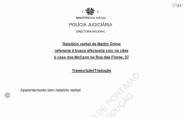 |
Verbal Report by Martin Grime Referring to the Searches Carried
Out with the Dogs in the McCann's Residence, Rua das Flores 27.
Transcription/Translation
Apparently
without verbal report. |
|
2469
- Analysis of the cadaver & blood dog searches in 5A and in the
vehicles (in Portuguese |
|
09 Processos Vol IX Page 2469 |
|
09_VOLUME_IXa_Page_2469 |
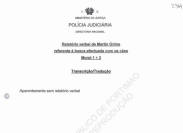 |
Verbal Report by Martin Grime Referring to the Searches Carried
Out with the Dogs Murat 1 + 2.
Transcription/Translation
Apparently
without verbal report. |
|
2470
- Analysis of the cadaver & blood dog searches in 5A and in the
vehicles (in Portuguese |
|
09- Processos Vol IX Page 2470 |
|
09_VOLUME_IXa_Page_2470 |
 |
Verbal Report by Martin Grime Referring
to the Searches Carried Out with the Dogs Murat 3 + 4.
Transcription/Translation
We made a search of the house and there was no indication on the
part of the dog of having found anything for which it had
received detection training |
|
2471
- Analysis of the cadaver & blood dog searches in 5A and in the
vehicles (in Portuguese |
|
09 Processos Vol IX Page 2471 |
|
09_VOLUME_IXa_Page_2471 |
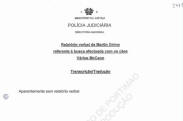 |
Verbal Report by
Martin Grime Referring to Searches Carried Out With the Dogs.
Various McCann.
Transcription/Translation
Apparently
without verbal report. |
|
2472
- Analysis of the cadaver & blood dog searches in 5A and in the
vehicles (in Portuguese |
|
09 Processos Vol IX Page 2472 |
|
09_VOLUME_IXa_Page_2472 |
|
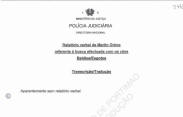 |
Verbal Report by Martin
Grime Referring to Searches Carried Out With the Dogs.
Waste lands and drains
Transcription/Translation
Apparently
without verbal report. |
2473 to 2483 Martin Grime -
Canine Search Report
2007.08
>2473-2474 Martin
Grime' Canine Search Report
(English) 2007.08
>2475
to 2477
Martin Grime' Canine Search
Report (Portuguese) 2007.08
>2478 2483-Martin
Grime' Canine Search Report (English)
|
|
TRANSLATIONS BY CUSHTY |
|
09-Processo 9 pages 2473 to
2483 |
|
09_VOLUME_IXa_Page_2473 |
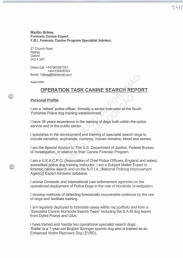 |
|
09_VOLUME_IXa_Page_2474 |
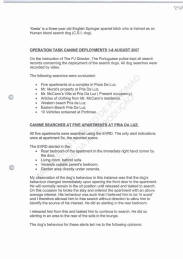 |
|
09_VOLUME_IXa_Page_2475 |
 |
|
09_VOLUME_IXa_Page_2476 |
 |
|
09_VOLUME_IXa_Page_2477 |
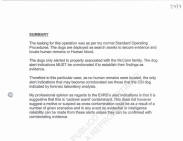 |
|
09_VOLUME_IXa_Page_2478 |
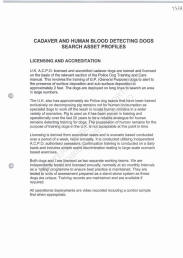 |
|
09_VOLUME_IXa_Page_2479 |
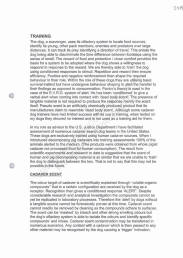 |
|
09_VOLUME_IXa_Page_2480 |
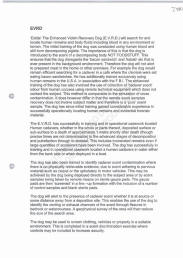 |
|
09_VOLUME_IXa_Page_2481 |
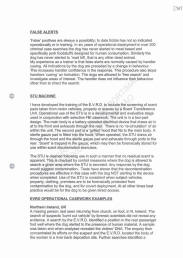 |
|
09_VOLUME_IXa_Page_2482 |
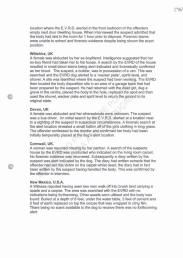 |
|
09_VOLUME_IXa_Page_2483 |
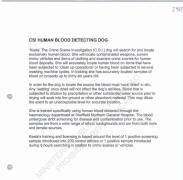 |
|
Eddie & Keela Martin Grime Report
August 2007
OPERATION TASK CANINE SEARCH REPORT
Personal Profile
I am a 'retired' police officer, formally a senior instructor at
the South
Yorkshire Police dog training establishment.
I have 35 years experience in the training of dogs both within
the police
service and in the public sector.
I specialise in the development and training of specialist
search dogs to
include narcotics, explosives, currency, human remains, blood
and semen.
I am the Special Advisor to The U.S. Department of Justice,
Federal Bureau
of Investigation, in relation to their Canine Forensic Program.
I am a U.K.A.C.P.O. (Association of Chief Police Officers,
England and Wales)
accredited police dog training instructor. I am a Subject Matter
Expert in
forensic canine search and on the N.P.I.A. (National Policing
Improvement
Agency) Expert Advisers database.
I advise Domestic and International Law enforcement agencies on
the
operational deployment of Police Dogs in the role of Homicide
investigation.
I develop methods of detecting forensically recoverable evidence
by the use
of dogs and facilitate training.
I am regularly deployed to homicide cases within my portfolio
and form a
'Specialist Canine Homicide Search Team' including the S.A.M dog
teams
from Dyfed Powys and USA.
I have trained and handle two operational specialist search
dogs:
'Eddie' is a 7-year-old English Springer spaniel dog who is
trained as an
Enhanced Victim Recovery Dog (EVRD).
'Keela' is a three-year old English Springer spaniel bitch who
is trained as an
Human blood search dog (C.S.I. dog).
OPERATION TASK CANINE DEPLOYMENTS 1-8 AUGUST 2007
On the instruction of The PJ Director, The Portuguese police
kept all search
records concerning the deployment of the search dogs. All dog
searches were
recorded by video.
The following searches were conducted:
Five apartments at a complex in Praia Da Luz.
Mr. Murat's property at Pria Da Luz.
Mr. McCann's Villa at Pria Da Luz ( Present occupancy).
Articles of clothing from Mr. McCann's residence.
Western beach Pria da Luz.
Eastern Beach Pria Da Luz.
10 Vehicles screened at Portimao.
CANINE SEARCHES AT FIVE APARTMENTS AT PRIA DA LUZ.
All five apartments were searched using the EVRD. The only alert
indications
were at apartment 5a, the reported scene.
The EVRD alerted in the:
Rear bedroom of the apartment in the immediate right hand corner
by
the door.
Living room, behind sofa.
Veranda outside parent's bedroom.
Garden area directly under veranda.
My observation of the dog's behaviour in this instance was that
the dog's
behaviour changed immediately upon opening the front door to the
apartment.
He will normally remain in the sit position until released and
tasked to search.
On this occasion he broke the stay and entered the apartment
with an above
average interest. His behaviour was such that I believed him to
be 'in scent'
and I therefore allowed him to free search without direction to
allow him to
identify the source of his interest. He did so alerting in the
rear bedroom.
I released him from this and tasked him to continue to search.
He did so
alerting in an area to the rear of the sofa in the lounge.
The dog's behaviour for these alerts led me to the following
opinions:
MINISTERIO PUBLICO DE PORTIMAO
The first alert was given with the dogs head in the air without
a positive area
being identified. This is the alert given by him when there is
no tangible
evidence to be located only the remaining scent.
The second alert was one where a definitive area was evident.
The CSI dog
was therefore deployed who gave specific alert indications to
specific areas
on the tiled floor area behind the sofa and on the curtain in
the area that was
in contact with the floor behind the sofa. This would indicate
to the likely
presence of human blood.
The forensic science support officers were then deployed to
recover items for
laboratory analysis.
There were no alert indications from the remaining properties. I
did however
see the dog search in the kitchen waste bins. These contained
meat
foodstuffs including pork and did not result in any false alert
response.
CANINE SEARCH OF MR MURAT'S PROPERTY.
The property was subjected to a search for human remains or
blood stained
articles. The outside of property was stripped of vegetation and
after the
ground being probed was searched by the EVRD dog. The inside of
the
property was then searched by the dog. There were no alert
indications and
no human remains were located.
CANINE SEARCH OF MR McCANN'S VILLA, PRESENT OCCUPANCY.
The villa interior, garden, and all property within were
searched by the EVRD.
The only alert indication given was when the dog located a pink
cuddly toy in
the villas lounge. The CSI dog did not alert to the toy when
screened
separately.
It is my view that it is possible that the EVRD is alerting to
cadaver scent
contamination. No evidential or intelligence reliability can be
made from this
alert unless it can be confirmed with corroborating evidence.
BOXES OF CLOTHING 1 PROPERTY FORM MR McCANN'S RESIDENCE.
At a suitable venue numerous boxes of clothing 1 property taken
from the
McCann present residence were screened using both the EVRD and
the CSI
dog. The venue was screened by both dogs prior to introducing
clothing /
property. Neither gave an alert indication. The screening then
took place with
the contents of each box being placed around the room in turn.
The process
was recorded by video and written records were taken by PJ
officers.
The only alert indication was by the EVRD on clothing from one
of the boxes. I
am not in possession of the details as these were recorded by
the PJ
officers present.
MINISTERIO PUBLICO DE PORTIMAO
It is my view that it is possible that the EVRD is alerting to
'a cadaver scent'
contaminant. No evidential or intelligence reliability can be
made from this
alert unless it can be confirmed with corroborating evidence.
WESTERN BEACH
The beach above the waterline was searched. This extended to
areas of
fallen rock and the cliff face as far as the dog could negotiate
the incline.
There were no alert indications.
EASTERN BEACH
The beach above the waterline was searched. This extended to
areas of
fallen rock and the cliff face as far as the dog could negotiate
the incline.
There were no alert indications.
CANINE VEHICLE SEARCHES.
Ten vehicles were screened in an underground multi storey car
park at
Portimao. The vehicles, of which I did not know the owner
details, were
parked on an empty floor with 20-30 feet between each. The
vehicle
placement video recording and management of the process was
conducted
by the PJ. The EVRD was then tasked to search the area. When
passing a
vehicle I now know to be hired and in the possession of the
McCann family,
the dog's behaviour changed substantially. This then produced an
alert
indication at the lower part of the drivers door where the dog
was biting and
barking. I recognise this behaviour as the dog indicating scent
emitting from
the inside of the vehicle through the seal around the door.
This vehicle was then subjected to a full physical examination
by the PJ and
no human remains were found. The CSI dog was then tasked to
screen the
vehicle. An alert indication was forthcoming from the rear
driver's side of the
boot area. Forensic samples were taken by the PJ and forwarded
to a
forensic laboratory in the U.K.
It is my view that it is possible that the EVRD is alerting to
'cadaver scent'
contaminant or human blood scent. No evidential or intelligence
reliability can
be made from this alert unless it can be confirmed with
corroborating
evidence. The remainder of the vehicles were screened by the
EVRD without
any interest being shown. Therefore the CSI dog was not further
deployed.
MINISTERIO PUBLICO DE PORTIMAO
SUMMARY
The tasking for this operation was as per my normal Standard
Operating
Procedures. The dogs are deployed as search assets to secure
evidence and
locate human remains or Human blood.
The dogs only alerted to property associated with the McCann
family. The dog
alert indications MUST be corroborated if to establish their
findings as
evidence.
Therefore in this particular case, as no human remains were
located, the only
alert indications that may become corroborated are those that
the CSI dog
indicated by forensic laboratory analysis.
My professional opinion as regards to the EVRD's alert
indications is that it is
suggestive that this is 'cadaver scent' contaminant. This does
not however
suggest a motive or suspect as cross contamination could be as a
result of a
number of given scenarios and in any event no evidential or
intelligence
reliability can be made from these alerts unless they can be
confirmed with
corroborating evidence. |